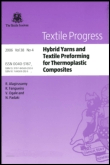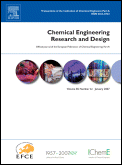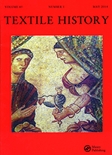
TEXTILE PROGRESS
Scope & Guideline
Championing Excellence in Textile Materials Research
Introduction
Aims and Scopes
- Innovative Textile Materials and Structures:
The journal highlights research on novel textile materials, including auxetic and 3-D woven structures, aiming to explore their unique properties and potential applications in various fields such as construction and healthcare. - Smart Textiles and Wearable Technology:
A significant focus is placed on the development of smart textiles that incorporate electronic functionalities, such as health monitoring and interactive features, enhancing user experience and utility. - Sustainability and Environmental Impact:
Research on sustainable practices, including upcycling textile waste and the use of alternative materials like cellular agriculture for leather-like products, addresses the pressing environmental concerns associated with textile production. - Textile Applications in Diverse Industries:
The journal explores the application of textiles in various sectors, including fashion, healthcare, and construction, emphasizing the versatility and importance of textiles in modern industries. - Regulatory and Safety Aspects of Textiles:
The journal also covers topics related to regulatory compliance, such as restricted substances in textiles, ensuring safety and environmental considerations are met in textile production.
Trending and Emerging
- Advanced Composite Textiles:
Research on composite materials, such as UHMWPE textiles and their applications, is gaining momentum, highlighting the demand for high-performance textiles in various industries. - Integration of Technology in Textiles:
The rise of smart textiles, including wearable sensors and conductive inks, underscores a growing trend towards integrating technology with textiles for enhanced functionalities. - Sustainable Materials and Practices:
There is an increasing emphasis on sustainable materials and practices, such as insect-proofing treatments for wool and upcycling textile waste, reflecting a broader commitment to environmental responsibility. - Textiles in Construction and Infrastructure:
Innovative applications of textiles in construction, such as textile structures for concrete reinforcement, are emerging as a significant area of interest, showcasing textiles' versatility beyond traditional uses.
Declining or Waning
- Traditional Textile Manufacturing Processes:
Research focused on conventional manufacturing techniques has decreased, possibly due to the industry's shift towards innovative and automated processes that enhance efficiency and sustainability. - Basic Textile Chemistry and Dyeing Techniques:
There is a waning interest in fundamental studies of textile chemistry and dyeing processes, which may be overshadowed by more advanced topics such as smart textiles and sustainable practices. - Non-Technical Aspects of Textiles:
Themes related to fashion merchandising and basic product development are becoming less frequent, indicating a shift towards more technical and innovative aspects of textiles.
Similar Journals

Chemistry & Chemical Technology
Exploring the Synergy of Chemistry and EngineeringChemistry & Chemical Technology is an esteemed academic journal published by LVIV POLYTECH NATL UNIV, specializing in the interdisciplinary intersections of chemistry and engineering. With its ISSN 1996-4196, this journal has become a significant platform, contributing to advancements and discussions within the fields of Chemical Engineering and Chemistry, as evidenced by its rankings in the 2023 category quartiles, where it is placed in Q3 for both disciplines. The journal aims to disseminate high-quality research articles, studies, and reviews from 2012 to 2024, welcoming contributions from researchers and professionals keen on driving innovation and fostering collaboration in the chemical sciences. As an open-access journal based in Ukraine, it has established a reputation for accessibility, providing comprehensive insights and a global perspective on the latest developments. Engaging with this journal not only enhances your understanding of current trends but also contributes to the global body of knowledge in chemical technology.

MM Science Journal
Exploring the Future of Engineering through Research and Collaboration.MM Science Journal is a leading publication in the fields of Automotive Engineering, Electrical and Electronic Engineering, Industrial and Manufacturing Engineering, and Mechanical Engineering, published by MM SCIENCE. Established in 2014 and spanning a converged period to 2024, this journal serves as a crucial platform for disseminating innovative research and practical applications relevant to industry professionals and academic scholars alike. With a notable Q3 ranking in multiple engineering categories and Scopus Ranks placing it in the 35th to 25th percentiles across various disciplines, MM Science Journal is committed to advancing knowledge and fostering collaboration in engineering disciplines. Although not currently an open-access publication, the journal remains instrumental for those seeking to engage with cutting-edge developments in engineering from its base in the Czech Republic. Researchers, students, and professionals are encouraged to explore the rich findings shared within its pages, contributing to the ongoing evolution of engineering practices.

INDIAN JOURNAL OF FIBRE & TEXTILE RESEARCH
Fostering knowledge and innovation in fibre and textile science.INDIAN JOURNAL OF FIBRE & TEXTILE RESEARCH (ISSN: 0971-0426, E-ISSN: 0975-1025) is a leading platform dedicated to advancing the field of textile research and innovation. Published by the NATIONAL INSTITUTE OF SCIENCE COMMUNICATION-NISCAIR in India, this open access journal has been fostering knowledge sharing since its establishment in 2006. With a broad scope encompassing Chemical Engineering, Environmental Science, and Materials Science, the journal's convergence from 1990 to 2024 highlights its commitment to ongoing academic dialogue. Currently categorized as Q3 in several disciplines, including Chemical Engineering and Environmental Science, it provides critical insights into contemporary challenges and developments. The journal's Scopus rankings further illustrate its influence within the research community, making it an essential resource for researchers, professionals, and students interested in textile technology and its intersections with sustainable practices. By fostering a collaborative environment for sharing pioneering research, the INDIAN JOURNAL OF FIBRE & TEXTILE RESEARCH stands as a vital conduit for scholarly communication in the textile sector.

Advanced Fiber Materials
Pioneering Discoveries in Advanced Fibrous MaterialsAdvanced Fiber Materials, published by SpringerNature, stands at the forefront of research in the realms of materials science, polymers, and optical and magnetic materials. With an ambitious scope that spans from 2019 to 2024, this journal is dedicated to disseminating cutting-edge findings and innovative applications in the field of advanced fibrous materials. It enjoys a prestigious status, classified in the Q1 quartile across several categories, including Electronic, Optical and Magnetic Materials and Materials Chemistry, showcasing its influence and relevance within the academic community. The journal's impressive rankings in Scopus highlight its significant contributions to the disciplines of Polymers and Plastics, as well as various aspects of Materials Science, consistently placing it among the top-tier publications in these fields. By encouraging open discourse among researchers, professionals, and students, Advanced Fiber Materials plays a crucial role in advancing knowledge and fostering innovation in material design and application.

EGYPTIAN JOURNAL OF CHEMISTRY
Unveiling Innovations in Chemistry and BeyondThe Egyptian Journal of Chemistry, published by the National Information & Documentation Centre (NIDOC), serves as a vital platform for disseminating novel research and advancements in the field of chemistry and its interdisciplinary applications. Established in 2004 and continuing its publication through 2024, this journal encapsulates a diverse range of topics including Biochemistry, Chemical Engineering, and Materials Science, reflected in its respectable Scopus rankings. With an array of Quartile rankings indicating its varying impact across different categories, scholars can benefit from its insights into innovative solutions and methodologies that address pressing scientific challenges. Although it currently does not operate under an open access model, researchers and students are encouraged to leverage its findings as it plays a pivotal role in the academic landscape of Egypt and beyond. For those engaged in chemical research, the Egyptian Journal of Chemistry stands as an essential resource, contributing significantly to the global body of scientific knowledge.

CHEMICAL ENGINEERING RESEARCH & DESIGN
Shaping Tomorrow's Chemical Engineering Landscape.CHEMICAL ENGINEERING RESEARCH & DESIGN is a prestigious journal that has been at the forefront of dissemination in the fields of chemical engineering and general chemistry since its inception in 1983. Published by Elsevier, the journal features a rich array of research articles that contribute to both theoretical and practical advancements in the discipline. With an impact factor that positions it strongly within the Q2 quartile for both Chemical Engineering and Chemistry categories, it occupies an esteemed place in the academic community, being ranked #77 out of 273 in Chemical Engineering and #111 out of 408 in General Chemistry on Scopus. Researchers and professionals will find it an invaluable resource for cutting-edge research and innovative methodologies that shape the future of chemical engineering applications. While the journal does not currently offer open access, it remains accessible through institutional subscriptions, ensuring that important findings continue to reach a broad audience. With a scope that is poised to expand through 2024, the journal aims to foster collaboration and knowledge sharing, supporting the continuous evolution of the field.

TEXTILE HISTORY
Discovering the Intersections of Textiles and SocietyTEXTILE HISTORY is a distinguished journal focusing on the rich tapestry of textile development across various historical contexts, published by Routledge Journals, Taylor & Francis Ltd. With origins dating back to 1968, this journal serves as a crucial platform for scholarly discourse in the fields of history, industrial and manufacturing engineering, and business management. It holds impressive rankings, including Q2 in History and ranks within the top 20% in Arts and Humanities, reflecting its significant contribution to understanding the socio-economic and cultural implications of textiles. Additionally, it operates under a traditional access model, ensuring that quality research is preserved within a structured environment. The journal is an invaluable resource for researchers, professionals, and students alike, aiming to advance knowledge and inspire future studies in textile history. Situated in the United Kingdom, the editorial team is committed to fostering a vibrant academic community that engages with the dynamic intersections of textiles, industry, and cultural heritage.

Journal of Cotton Science
Innovating Practices for a Sustainable Cotton IndustryJournal of Cotton Science is a vital publication dedicated to advancing the understanding and innovative practices within the cotton industry. Published by the NATIONAL COTTON COUNCIL OF AMERICA, this journal has been a key resource for researchers, agronomists, and industry professionals since its inception in 1997, with contributions spanning various aspects of cotton science, including breeding, genetics, pest management, and environmental impact. With an ISSN of 1523-6919 and an E-ISSN of 1524-3303, it currently holds a Q3 ranking in the Materials Science (miscellaneous) category as per the 2023 quartiles. While the journal operates without open access, it remains accessible to professionals looking to contribute to its expanding reach. The Journal of Cotton Science plays a pivotal role in disseminating cutting-edge research and fostering collaboration among scientists, positioning itself as an essential resource in the ongoing exploration of cotton's material science applications. Stay up to date with the latest findings and developments that shape the future of this crucial agricultural product.

Journal of Fiber Science and Technology
Advancing the Future of Fiber InnovationJournal of Fiber Science and Technology is a pivotal scholarly publication dedicated to advancing the field of fiber science, encompassing the study of fibers and textiles across various applications. Published by SOC FIBER SCIENCE TECHNOLOGY in Japan, this journal has been a significant forum for innovative research since its inception, with coverage from as early as 1946. Despite its current categorization in the Q4 quartile across multiple disciplines including Chemical Engineering, Industrial and Manufacturing Engineering, and Materials Science, the journal provides a valuable platform for the dissemination of knowledge, fostering collaboration among researchers, professionals, and students alike. The journal promotes an interactive learning environment, welcoming contributions that underscore the latest advancements in fiber materials, processing technologies, and their broad industrial implications. By bridging theory and practical application, the Journal of Fiber Science and Technology is essential in shaping the future of fiber technology.

Advanced Industrial and Engineering Polymer Research
Driving Excellence in Chemical EngineeringAdvanced Industrial and Engineering Polymer Research (ISSN: 2542-5048), published by KEAI PUBLISHING LTD, stands as a pivotal Open Access journal dedicated to the cutting-edge advancements within the fields of materials science and polymer engineering. Established in 2018, this journal aims to foster innovation and disseminate high-quality research that spans the realms of chemical engineering, industrial and manufacturing processes, and polymer applications. With impressive category quartile rankings in Q1 across various disciplines—including Chemical Engineering, Industrial and Manufacturing Engineering, and Materials Science—this journal represents a significant resource for researchers, industry professionals, and students alike. Offering access from its headquarters in Beijing, China, and embracing a commitment to open access since its inception, Advanced Industrial and Engineering Polymer Research ensures that groundbreaking findings are readily available, facilitating collaboration and enhancing knowledge in the global scientific community.